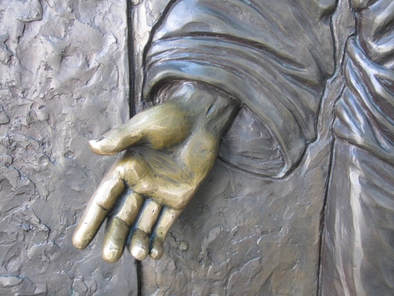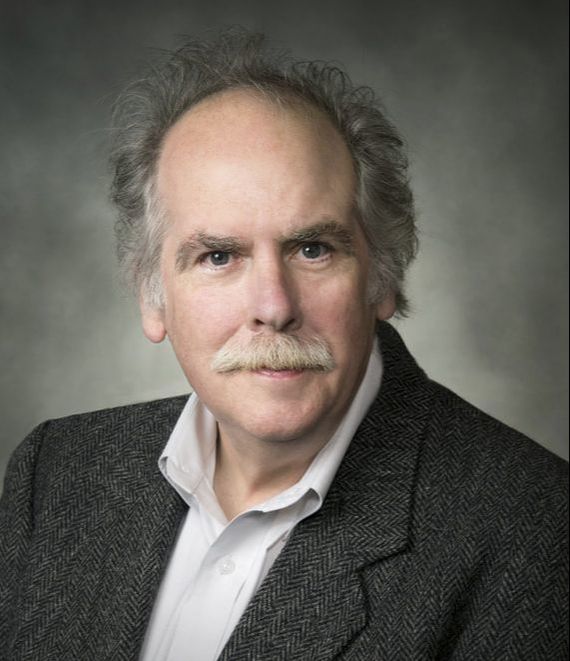 Martyrs' Shrine, Midland Ontario Martyrs' Shrine, Midland Ontario LONDON, ONTARIO – Hermaneutics is still on holidays this week but here is a piece from two summers ago about our discovery of the glories of Catholic tourism . . . . IN THE LAST DAYS of July my wife and I elected to take our place among 49 other pilgrims on a chartered bus of the incongruously named Badder line out of St. Thomas that took us to St. Joseph’s Oratory in Montreal (stomping ground of the newly canonized Brother Andre); Our Lady of the Cape in Cap-de-la-Madelaine near Trois-Rivieres (the most thoroughly Catholic town I’ve ever visited on this continent); the Basilica of Ste. Anne de Beaupre (a magnificent cathedral dedicated to Our Lady’s mother and the oldest pilgrimage site in North America); Notre Dame Basilica-Cathedral in old Quebec City (our first visit to that exquisite burg since our honeymoon in 1977) and the touchingly modest Shrine to the even more recently canonized Kateri Tekakwitha in Kahnawake. Then, our taste for such excursions nicely whetted and our holiday savings still not quite exhausted, we signed on late last month for a one day outing with the same bus line to the Canadian Martyrs’ Shrine in Midland, Ontario and, just across the highway, the reconstructed 17th century mission of Ste. Marie among the Hurons. That trip really should have been two days to do justice to both sites but as we’d been to the Shrine twice before and Ste. Marie once, we didn’t feel as frustrated by our timetable as we might.
Travelling by bus is a new wrinkle in our lives that we’re both enjoying more than we thought we would. I’ve never had a driver’s licence and with no kids around to handle some of the shifts behind the wheel (funniest darn thing; they cannot be cajoled to join us on shrine tours) this is a way to spare my wife the drudgery of long haul driving. Her eyes freed up to drink in something other than rear view mirrors and the road ahead (and with that significant lift in elevation that a bus provides) she’s been luxuriating in passing vistas in a way not possible since her pre-driving childhood. It’s been a treat for me because of the sustained conversations we’re able to have when she isn’t required to direct at least half of her attention elsewhere. And when the conversation subsides, I don’t feel like I’m leaving her to do all of the work if I take up a book and put my mind somewhere else for an hour or so. I became a Catholic in 1984 and racked up a few short bus tours and retreats over the years. My wife only converted last year so this was her introduction to the glories of Catholic tourism – the entire bus reciting the Rosary or the Divine Mercy every hundred or so miles (sometimes sweetly engaging; other times like a shot of Nyquil to the vein), the bracingly bare bones accommodation in church-run hostels (no TV, no Wi-Fi . . . yes!), the raid on each shrine’s gift shop to stock up on holy hardware (my only complaint being the limited range of books for sale at all such emporiums) and the conversations you strike up with some of your fellow pilgrims (and carefully avoid with others). It was a holiday like no other; simultaneously testing and enriching our faith and driving home two truths to deeper levels than I’ve appreciated before. The first is the essential and formative role the Church played in the very earliest development of Canada. As a lifelong Ontarian and student of the secular school system, I previously regarded the Black Robes as a sort of religiously eccentric wing of the Hudson’s Bay Company; as roving civil servants adept at the arts of colonization rather than courageous pioneers and martyrs who risked everything to plant the seed of faith in the new world. The other reaffirmed truth is that ours is a faith that asks for everything we can bring to it. One of the most dramatic ways in which this is expressed is by the splendour of these churches and shrines – the sheer scale of most of them, the ingenuity and daring that went into their design and construction (St. Joseph’s Oratory and the Canadian Martyrs’ Shrine are carved into the side of mountains, for goodness’ sake), the painstaking artistry and attention to detail that goes into their outfitting, adornment and decoration. Each one of them in its very different way constituting a three dimensional prayer of love and praise. One of the challenges that faith of any kind presents to modern man is the daunting prospect of having his gifts and energy and his very identity subsumed into this larger enterprise where nothing that he does will any longer redound solely to his personal credit. A lot of folks are squeamish about marriage for much the same reason, fearing some sort of erasure or diminishment of the self. The paradox here is that in really giving ourselves to another person – human or divine – what actually gets erased is our own too-precious image of ourselves and a too-constraining regard for our public reputation. Dare to throw such neurotic concerns aside in devotion and service to another and all you risk is affirmation of who you truly and imperfectly are. The Welsh poet John Ormond (1923–90) captured this dynamic beautifully in his poem, Cathedral Builders, about the nameless generations of craftsmen and artists who built the great cathedrals of Europe and Britain: They climbed on sketchy ladders towards God, With winch and pulley hoisted hewn rock into Heaven, Inhabited sky with hammers, defied gravity, Deified stone, took up God’s house to meet Him, And came down to their suppers and small beer; Every night slept, lay with their smelly wives, Quarrelled and cuffed the children, lied, Spat, sang, were happy or unhappy, And every day took to the ladders again, Impeded the rights of way of another summer’s Swallows, grew greyer, shakier, became less inclined To fix a neighbour’s roof of a fine evening, Saw naves spout arches, clerestories soar, Cursed the loud fancy glaziers for their luck, Somehow escaped the plague, got rheumatism, Decided it was time to give it up, To leave the spire to others, stood in the crowd Well back from the vestments at the consecration, Envied the fat bishop his warm boots, Cocked up a squint eye and said, ‘I bloody did that.’
1 Comment
Ninian Mellamphy
6/8/2018 06:26:21 am
A very interesting profession of faith---and a good travelogue.
Reply
Your comment will be posted after it is approved.
Leave a Reply. |
HERMANEUTICS
If you would like to contribute to the ongoing operations of Hermaneutics, there are now a few options available.
ALL LIFE IS A GIFT :
THE IMPORTANCE OF TRADITION :
Archives
June 2024
Categories
|


 RSS Feed
RSS Feed